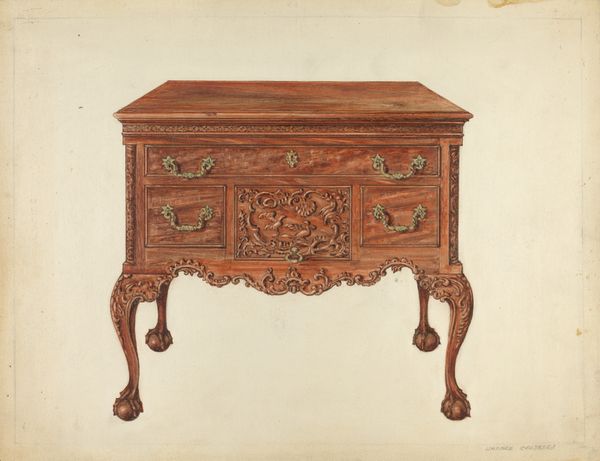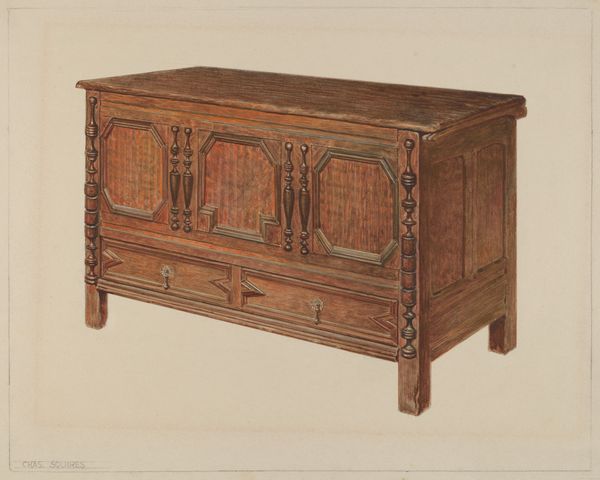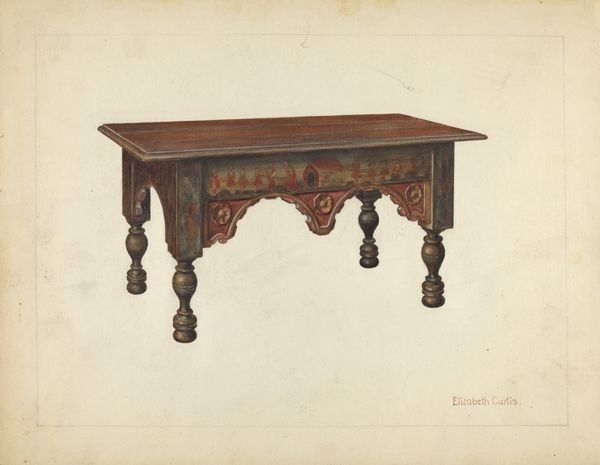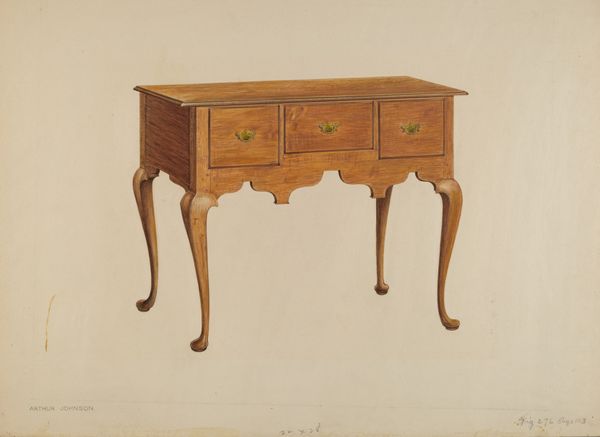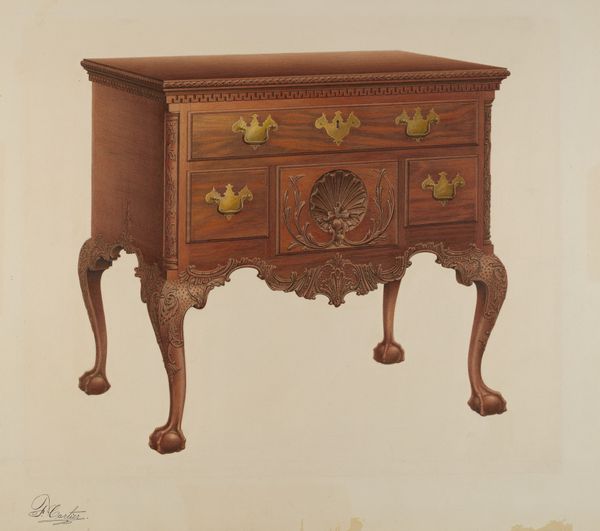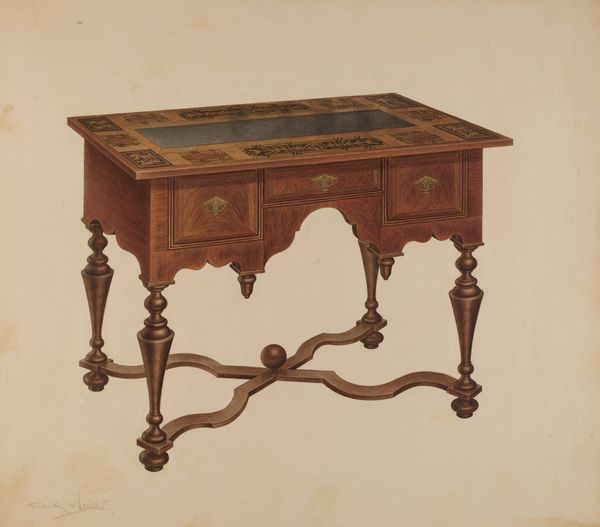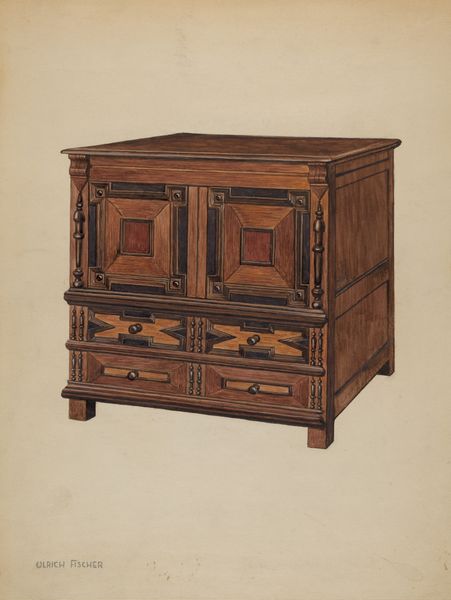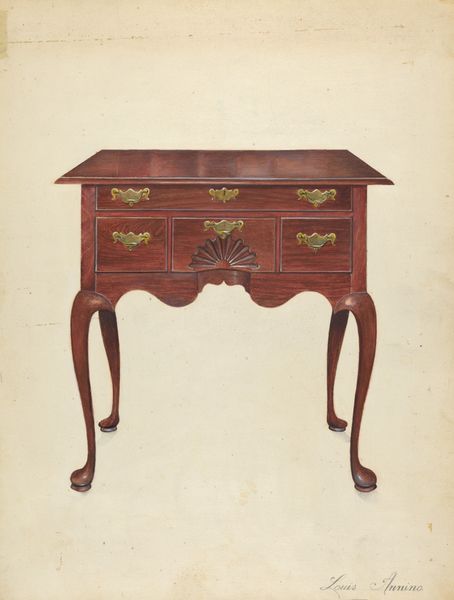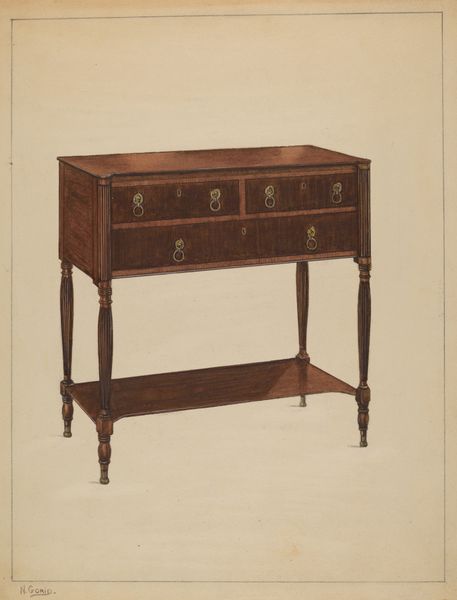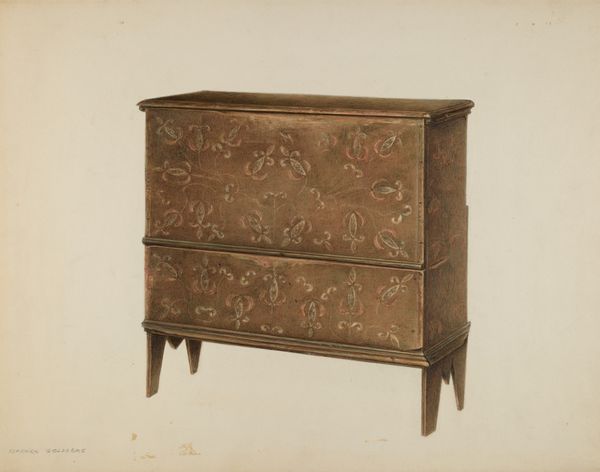
drawing, pencil
#
drawing
#
pencil
#
academic-art
Dimensions: overall: 22.4 x 28.2 cm (8 13/16 x 11 1/8 in.) Original IAD Object: 30"high; 33 1/2"wide; 20 1/4"deep
Copyright: National Gallery of Art: CC0 1.0
Curator: Before us is "Lowboy," a drawing in pencil from around 1937 by Charles Squires. It presents an elegant, antique table. What strikes you about this work? Editor: Initially, I'm drawn to the dynamic tension created by those curvilinear cabriole legs against the rectangular form of the table's body. It creates such a strange composition with its lines. The colour and detail of the designwork really pull it together. Curator: Indeed. Those legs are classic Queen Anne style, evoking a sense of refined gentility and almost organic growth from the floor. Now consider the recurring shell motif, common during various eras in furniture making – perhaps linking ideas of domesticity and precious treasures, reflecting status. It invites pondering of social rituals associated with the piece. Editor: Absolutely. Structurally, that central shell becomes a focal point, balancing the smaller rectangular drawers above. Also, there is almost a juxtaposition of order and nature because you see natural motifs against the dark surface of the table. Its effect lies in how it manages these contrasts to form a harmonious unit. Curator: That balance underscores societal ideals. A lowboy would often function as a dressing table—a site for self-presentation and constructing identity. The decoration and design mirror aspiration and artistry. Editor: Thinking about materials, the use of pencil is interesting, though. It imitates wood and inlaid lacquer but remains, on its own, fragile. Perhaps Squires aims to underscore ideas around imitation and representation itself. The shadows along its legs definitely show a talent for mimicking reality. Curator: Intriguing point! By evoking the craftsmanship of such elaborate furniture through something so accessible as a drawing in pencil, Squires might be prompting reflections on shifting societal access to symbols of luxury and power. Editor: Ultimately, analyzing “Lowboy" in terms of composition reveals more than just a functional object; it discloses cultural narratives inscribed into furniture design. Curator: Agreed. Squires' depiction makes you think about more than design; it makes you ponder the meaning society projects into the very furniture in our homes.
Comments
No comments
Be the first to comment and join the conversation on the ultimate creative platform.

